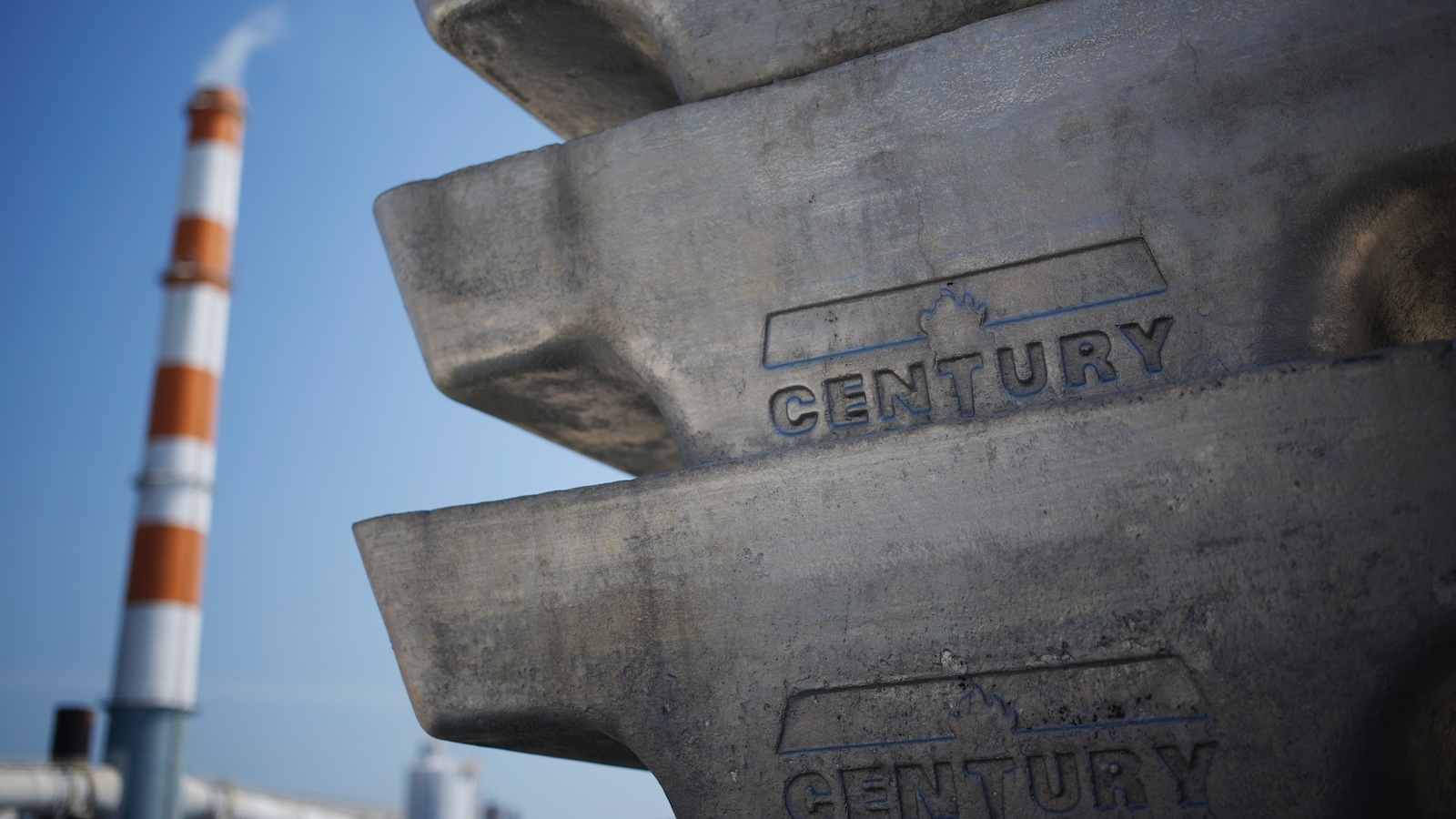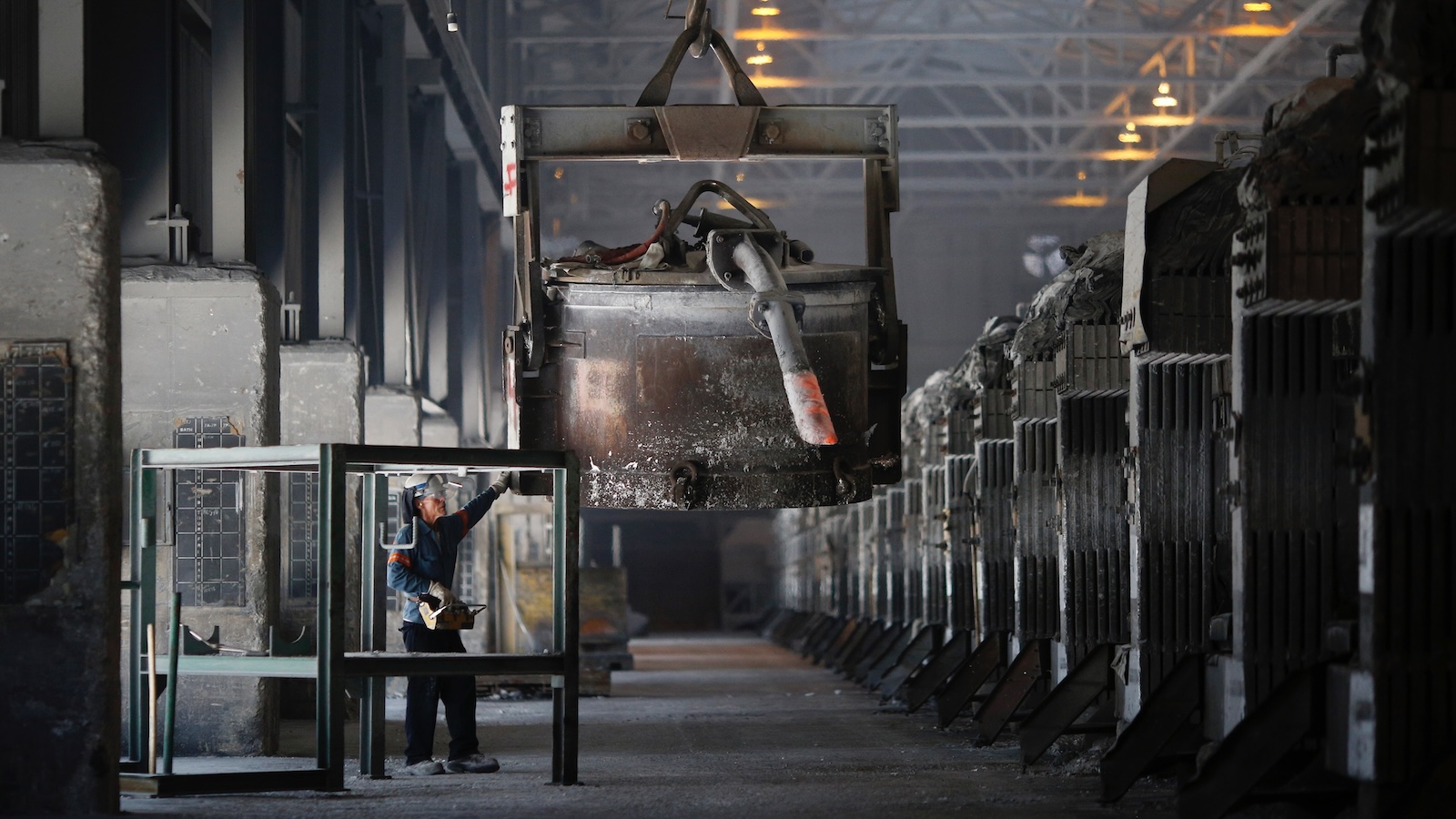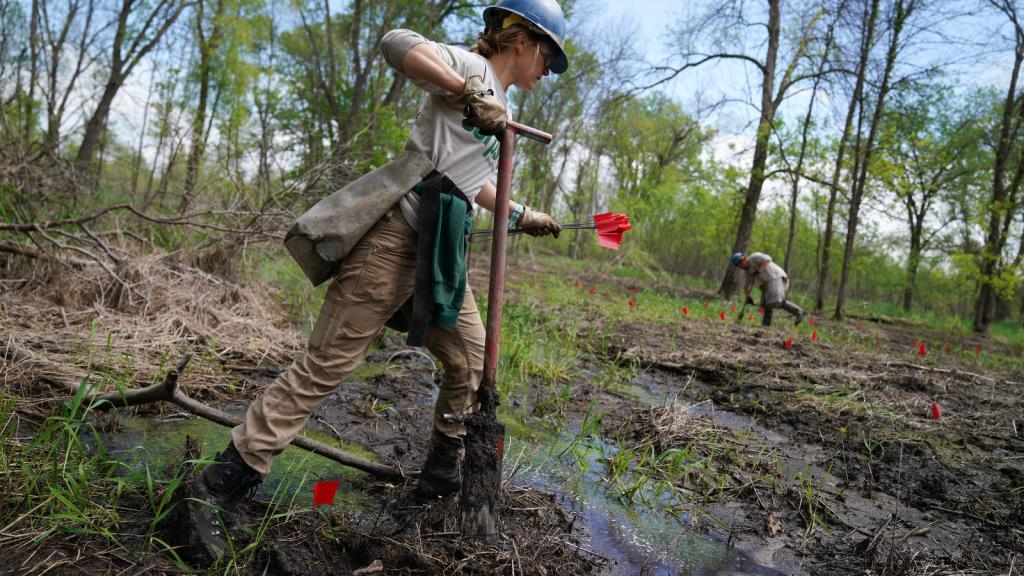Aluminum is a crucial raw ingredient in the fight against climate change. But to ensure the transition off fossil fuels is a clean one, the industry needs a serious makeover. A new federally funded “green smelter” could help make that happen.
Making this remarkably versatile metal requires a huge — and near-constant — supply of electricity. Much of it is generated by burning fossil fuels, which is one reason aluminum manufacturers are responsible for about 1.1 billion tons of carbon dioxide emissions a year. That’s more than twice the amount all of Australia spews annually.
Cleaning things up poses a huge challenge, one the Department of Energy, or DOE, wants to help solve. In March, the agency announced $6 billion in funding for “industrial demonstration” projects that showcase promising strategies for reducing the climate impact of heavy industry. The need is particularly acute, because heavy industrial processes like aluminum production generate nearly one-third of the country’s greenhouse gas emissions.
The beneficiaries of the government’s cleanup effort include Century Aluminum Company, which could receive up to half a billion dollars to build the nation’s first new aluminum smelter in 45 years. The facility, dubbed the Green Aluminum Smelter, could double the amount of virgin, or primary, aluminum the country produces while emitting 75 percent less CO2 than older smelters, thanks to increased efficiency and the use of renewable electricity. The grant, which is awaiting finalization, is a “huge vote of confidence and a shot in the arm” for the industry, said Annie Sartor, the aluminum campaign director at Industrious Labs, a nonprofit focused on industrial decarbonization.
That could boost a sector on life support. Although the United States once led the world in producing the lightweight and durable metal, most of the country’s aluminum smelters have shuttered since the 1980s due to rising energy costs, falling prices, and a broader trend of American firms sending manufacturing overseas. Production, which peaked in 1980 at 4.65 million metric tons per year, has declined by more than 80 percent since then, according to the BlueGreen Alliance, a coalition of environmental organizations and labor groups. That puts the U.S. in a tricky position as demand surges: A report released last year by researchers at Dartmouth and Princeton universities found that the country’s wind and solar industries alone could require nearly 8 million metric tons of the material annually by 2035. That’s nearly double the amount of primary and recycled aluminum the country produced in 2022.
And that’s to say nothing of the aluminum required for EVs, power transmission lines, and countless other applications, from cookware to cell phones. Even recycling the stuff requires virgin material, which is mixed into all those melted cans and car parts and other scrap to produce quality metal.
While there’s little question the U.S. will need a lot more aluminum, how it is made is increasingly important. Production starts with converting bauxite, an aluminum-rich ore, into a purified powder called alumina. That material is then smelted to produce the metal. All that mining and processing creates ecological destruction, generates toxic waste, and releases a cocktail of pollutants. It can also help warm the planet: Carbon emissions occur throughout the process, but more than 60 percent of them come from generating the electricity used in smelting. A large operation can require enough juice to power millions of homes.
“We’re talking about truly eye-watering amounts of electricity,” said Rebecca Dell, an industrial decarbonization expert with the nonprofit ClimateWorks Foundation. If the industry hopes to reduce its carbon footprint, “the first, most important thing to do is to use clean electricity.”
Such efforts are underway throughout the world. Although China, the world’s largest producer of primary aluminum, relies upon coal-fired power plants to generate much of the electricity needed to hold that title, others are proving that clean energy can deliver dramatic emissions reductions. Smelters in Norway and Quebec, Canada, release far fewer greenhouse gases because they use hydropower, while those in Iceland tap the nation’s abundant geothermal resources.

Century Aluminum, a global producer that’s been around since 1995, already operates a low-carbon smelter in Iceland that’s capable of churning out over 300,000 tons of aluminum each year. The company hopes the DOE funding will allow it to bolster its presence in the U.S., where it operates two smaller smelters in Kentucky and another in South Carolina, while significantly expanding its production of low-carbon aluminum. It hasn’t said exactly how much of the metal its proposed smelter will be able to produce, but based on the expectation that it will roughly double the nation’s virgin production, Sartor suspects the goal is to churn out “just under” a million tons of the metal annually. (The U.S. produced 750,000 tons of virgin aluminum in 2023.) Neither Century Aluminum nor the DOE have said when the smelter might begin operations.
While many details are uncertain, including the smelter’s production capacity and the construction timetable, one thing is clear: The new plant will be expensive. Sartor said Century Aluminum will need all of the money DOE is offering and much more.
“Building a new, large-scale, modern aluminum facility is far more than just twice that amount,” Sartor said. According to energy consultancy Wood Mackenzie, aluminum smelters outside of China can cost up to $4 billion per million tons of annual production.
Beyond building the infrastructure needed to produce aluminum lies the question of how to produce the clean electricity needed to power it. According to the DOE, Century Aluminum’s preferred site is in Kentucky, a state with lackluster clean energy credentials. In 2020, the Bluegrass State had a paltry 30.1 megawatts of solar generating capacity and no wind energy production whatsoever. Sartor says she expects a plant of this size to require “somewhere in the neighborhood of a gigawatt” of power. That’s enough to serve 800,000 U.S. homes for a year. “The only way that will happen is if gargantuan amounts of clean energy get built in Kentucky,” Sartor said. “There’s no other way around this.”
A representative for Century Aluminum told Grist the company is “excited to move this transformational project forward,” but declined to answer other questions or say how it plans to secure the carbon-free energy required. The DOE wouldn’t speak to the challenges that may arise procuring clean energy, citing ongoing award negotiations.
That said, the site hasn’t been finalized, and locations within the Ohio and Mississippi River basins are also reportedly under consideration. Dell believes that brings an interesting political dimension to the project because Century Aluminum expects the smelter to create more than 1,000 full-time union jobs and another 5,500 construction jobs.
“That’s a very attractive economic development opportunity for a state like Kentucky — or maybe for its neighbors,” Dell said. Century Aluminum, Dell said, is effectively putting Kentucky and nearby states — many of which haven’t exactly embraced renewables — on notice that “there’s a huge opportunity on the table if you guys can figure out a way to develop the electricity that’s needed.”
If Century Aluminum succeeds in finding the clean energy it needs, it could help catalyze changes in other industrial sectors such as steelmaking. Dell notes that in most of the “high value added markets” for steel, like the automotive sector, the primary competition is aluminum.
“Both of these industries are constantly trying to convince the car companies, ‘use our metal, not their metal,’” Dell said. “Having more clean aluminum out there will certainly act as an encouragement to the steel industry to clean up their act.”



